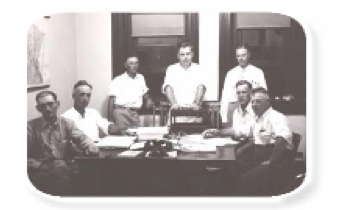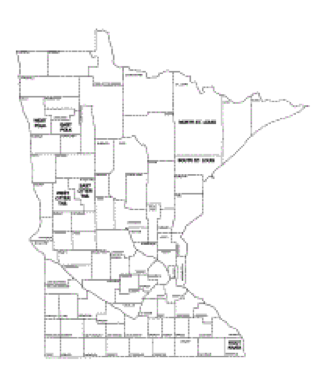What is an SWCD?
Minnesotans count on SWCD technical assistance with conservation practices that protect the quality of Minnesota's greatest treasure - our natural resources.
Overview
SWCDs are local units of government that manage and direct natural resource management programs at the local level. Districts work in both urban and rural settings, with landowners and with other units of government, to carry out a program for the conservation, use, and development of soil, water, and related resources.
One crucial niche districts fill is that of providing soil and water conservation services to owners of private lands. Privately owned lands make up 78 percent of the land surface in Minnesota. Managing these private lands, whether agriculture, forest, lakes, or urban, is key to Minnesota's quality of life.
Minnesotans trust SWCDs to provide needed technology, funding and educational services because they are established in each community, governed by local leaders and focused on conservation of local soil and water resources.
History
The first SWCD in Minnesota - the Burns-Homer-Pleasant district, later renamed the Winona SWCD - was created in 1938 in response to the Dust Bowl of the 1930's. Also known as the “dirty thirties,” intensive farming during a time of drought allowed high winds to erode the landscape and carry clouds of dust from the Great Plains all the way to Washington, D.C. Districts were subsequently developed across the country to encourage landowners to alter their farming techniques in order to more wisely use our soil and water resources. Over the years, soil and water conservation districts expanded their focuses beyond agriculture to also provide assistance in forested, lakes and urban areas of their communities. Districts have also expanded their base of clientele to include not only private landowners, but also other units of government such as counties, cities, townships and watershed districts.

The elections have always been at-large within the district. In 1974 “supervisor nomination districts” were mandated for the purpose of ensuring some measure of geographic distribution of elected supervisors across each SWCD. The rationale for this is that the SWCD programs deal with land and water issues of geographic scope; thus, it was seen as good government to ensure geographic distribution of elected officials across the SWCD.
There are 89 SWCDs in Minnesota, providing 100% coverage of the state. There is at least one SWCD in each of the 87 counties, with the exception of the most populated county - Hennepin County, while a few of the larger counties have more than one:

- Otter Tail County - East Otter Tail SWCD and Wester Otter Tail SWCD;
- Polk County - East Polk SWCD and West Polk SWCD; and
- St. Louis County - North St. Louis SWCD and South St. Louis SWCD.
SWCD boards set overall policy and long-term objectives for their district and work with the SWCD staff to see that policies and plans are implemented. They are not paid a salary however, they do receive compensation for attending meetings and are reimbursed for expenses.
Authority
Many SWCD authorities are established under Minnesota Statutes Chapter 103C - Soil and Water Conservation District Law. See Minn. Stat. § 103C.331 - Powers of District Boards.
Funding
Soil and Water Conservation Districts are funded through a variety of sources. Many of their program administration dollars and funding for landowner projects are state dollars allocated by the legislature and passed-through the State Board of Water and Soil Resources (BWSR). General operating funds are obtained from BWSR, counties, fees for service and grants or partnership agreements with the federal government or other conservation organizations.
Governance
Soil and Water Conservation Districts (SWCDs) are political subdivisions of the State. Supervisors serve four year staggered terms; generally, two or three of an SWCD's five supervisors are up for election every two years. These positions have been local elected officials since SWCDs began to be formed in 1937. Since 1971 the offices have appeared on the November ballot as a nonpartisan office.
